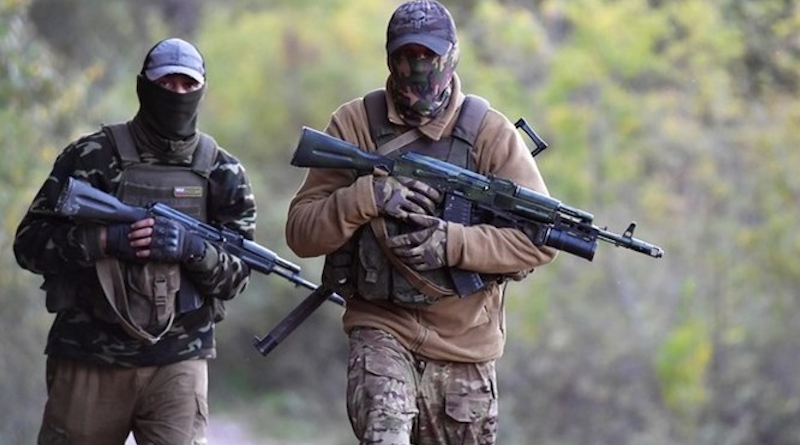Political-Military-Mercenary Triangulation: A Look At The Wagner Group – Analysis
By IPCS
By Vice Admiral Vijay Shankar (Retd.)
Armed interventions often demand the deployment of light forces over a short duration. Mercenaries have been used in such circumstances. If the state-employed mercenaries fail to achieve the desired end, the event is denied.
The Russian Wagner Group is of interest in this context. It must be seen as a new phenomenon, primarily because their control, or lack of it, defies any formal structure. Their mass is that of a regular army (reportedly 50,000 strong) and their allegiance is questionable. It has, however, re-initiated conversation on the use of mercenaries in contemporary warfare, particularly its interplay with a state’s political and military leadership.
Background
The Wagner Group, a private Russian military company, was led byYevgeny Viktorovich Prigozhin, an oligarch, reportedly with connections and ambitions. Till recently tasked with fighting Kremlin’s land-war in eastern Ukraine, Wagner had indefinite access to Russian military infrastructure. Conceptually enigmatic and cloaked in a purpose that remains nebulous; Wagner’s command and control structure is unclear. What is clear is that relations between the Russian military and Wagner is a tenuous one, with the highest political circle in the Kremlin exercising exclusive control. Despite its ambiguous existence, Wagner has operated around the globe in furtherance of Russia’s foreign policy objectives. Its commission includes clandestine or overt, armed missions and security to private business interests. As for its legal status, it was obviously created with the intention of operating on the fringes of international law of war.
Wagner’s mutinous failure in Ukraine ought to remind the Kremlin of the words of Machiavelli: “…Italy’s present ruin has been caused precisely by a prolonged dependence on mercenaries.” Media caricatures of Mr. Prigozhin—outfitted in an undersized combat helmet, bulging out of his bullet proof jacket, fulminating over the lack of equipment and logistics, and threatening revolt—was telling. It spoke volumes of the mercenary’s regimen and ability to fight. Two months after a failed mutiny attempt against the Kremlin, Prigozhin’s death in a plane crash, along with top Wagner leadership, has enabled the state to project itself as the paramount power. For instance, after their leader’s death, Wagner fighters were ordered to sign an oath of allegiance to the Russian state.
Military Judgement and Leadership
In democracies, constitutional authority over the military will always be vested in civilian hands. What unsettles matters is when authority is made too pervasive and usurped by agents lower in the political hierarchy. The duties of a political office in charge of the military must not enter the domain of ‘military judgement’, where knowledge, motivations, and experience are at play.
Political savvy must essentially discern the line between strategic direction and the extent to which military means can aid in achieving purpose. The military decision loop first studies the nature of the threatening conflict and then seeks to rationalise an operational strategy that optimises means with effectiveness. In the Ukraine conflict, in addition to the divide between the military and the Wagner Group being evident, the latter’s mutiny against the Kremlin surfaced several anomalies and lacunae in the political-military-mercenary triad.
Grand Theory and the Operational Art
War, as Clausewitz postulated, is “a continuation of political activity by other means.” Waging war requires institutions that address problems along the politico-military interface. Modern militaries, while developing military plans, are loathe to taking risks that don’t hold a high probability of success. This in turn leads to a skewed situation, with unachievable policy aims set out. Moreover, both political and military leadership being resident in one authority, with neither check nor balance, is a recipe for disaster.
There are several instances in history when a politician-steered approach led to strategic blunders. Hitler’s role in World War II; America in Vietnam; and the 20-year conflict in Afghanistan are examples of wars in which the politico-military balance had gone awry. The Sino-Indian War of 1962 is of also particular significance: political decisions with external-security ramifications were made without military involvement and leadership surrounded itself with incompetent defence advisors. So much so that come crunch time, the army was routed; the navy remained in its havens; and the air force contemplated torching its forward-deployed fighter aircraft.
In the run-up to war, civilian leadership must not only have superior authority but also the sagacity to entertain alternative options that provide decision-avenues short of armed conflagration. And if recourse to arms is advanced then it must never be terminal.
Chilling Trends
Modern strategic thought has no logic that gives description to private wars. The mercenary fights for any state or nation without regard to political interests, cause, or even outcome, as long as wages are good. The return of the mercenary and their access to the highest bidder—be that a politician, oligarch, or a multinational corporation—is one of the most dangerous and unpredictable trends of our times.
Today, the mantri is engulfed by arm-chair strategists and think-tanks preaching the need for interventions that invite low intensity, ‘less-than-military’ operations. This has perilous implications for the marketplace of armed forces. In an unregulated situation, if the means of waging war are extended to entities such as the Wagner Group, who won’t flinch in marching against the state that deploys it, it only spells anarchy for global order.
Vice Admiral Vijay Shankar (Retd.) is Distinguished Fellow, IPCS, and former Commander-in-Chief of the Strategic Forces Command of India.

